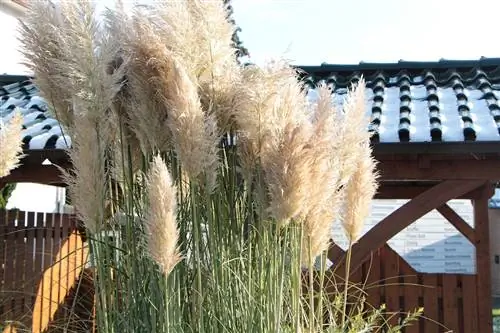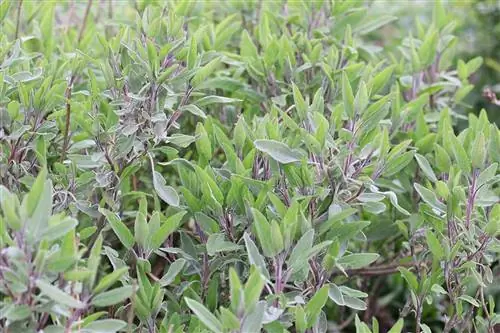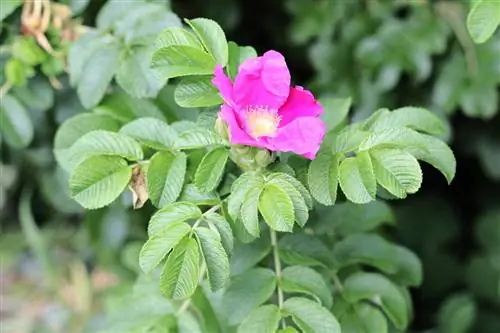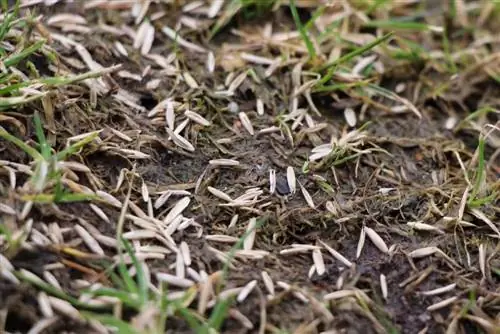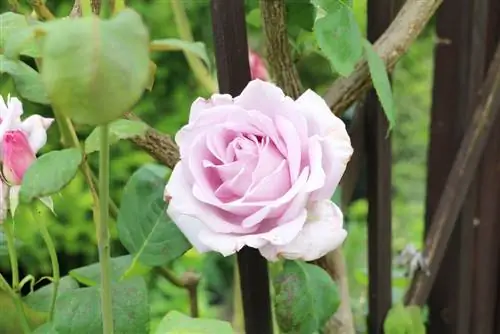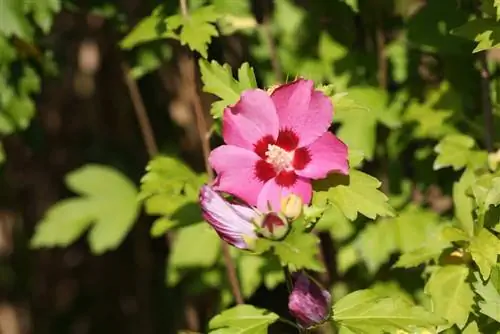- Author admin [email protected].
- Public 2023-12-17 03:39.
- Last modified 2025-06-01 06:48.
Cutting grass requires a certain amount of work and time. However, this care measure can be made much more effective and pleasant with certain tricks - you can find out what they are here!
Why cut back grass?
Numerous grasses benefit from an annual cut, although this is particularly beneficial for deciduous grasses (e.g. pampas grass, miscanthus or pennisetum grass). The reasons for this vary, with the following factors in particular favoring an annual cut:
- Denser and more lush growth
- Avoiding natural reproduction
- Extending lifespan
- Limiting the height of growth
Tip:
Some ornamental grasses can reach a height of up to three meters.
Choosing the right time
Grasses should never be cut randomly throughout the year, as this could harm the plants and affect their growth. Instead, it is advisable to cut the grass in spring - although a date between February and April is best. Although it is tempting to cut dead stalks in autumn, there are several reasons why you shouldn't:
- Stalks provide frost protection for roots
- They serve as winter protection for small animals
- Provide winter food and nesting material for birds
- Privacy protection remains intact
- Preventing rot
Most ornamental grasses are hardy and can cope well with the winter conditions in this region. However, a cut in autumn would expose the root area and thus remove the natural winter protection. It should not be forgotten that water can penetrate cut stalks more easily and thus increase the risk of rot. For these reasons, it is not advisable to prune in autumn.
The best tool
Cutting grass requires a lot of work and time - but choosing the right tool can make the maintenance process much more effective and easier. In any case, it is advisable to wear gloves and long-sleeved clothing, as the sharp-edged stalks can cause injuries. The cutting tool itself should always be disinfected, sharp and adapted to the respective grass species:
- Low grass and small areas: secateurs with long handles
- Larger grass: pruning shears
- Thick stalks: electric hedge trimmer
Note:
Some grasses are not cut, but simply “combed” with a small rake or a multi-pronged claw.
Cut summer green grass correctly
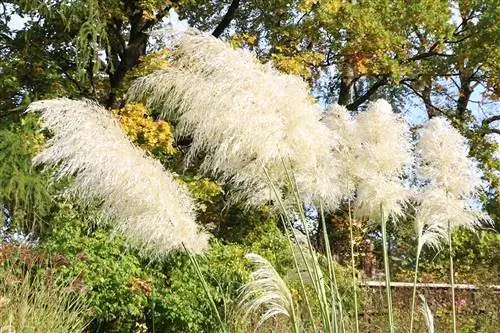
Summer green grasses (e.g. pampas grass, miscanthus and pennisetum) cope very well with pruning measures, which is why a proper pruning in spring has proven useful for them. It is worth paying attention to the following:
- Cut grasses back to 10 - 20 cm
- Above the roots or halfway
- Do not damage newly sprouted stalks
- Remove cut stalks with a leaf broom
Cutting evergreen grass
In contrast to deciduous grasses, evergreen grasses do not benefit from severe pruning because it does not stimulate their growth. Instead, a care cut is recommended for them, in which only as much is cut as is actually necessary.
- Remove leaf tips damaged by frost
- Remove dead stalks
Cutting very large grass
Some grasses grow very tall and lush, which can make cutting difficult. In addition, the stubborn stalks are associated with an increased risk of injury. In order to easily trim even very tall specimens, it is worth first tying them together into small bunches and then shortening them as follows:
- Start from the outer edge
- Keep the stalks together for cutting
- Don't cut too low
Comb, pull and pluck
Not all grasses require pruning, as many of them can be kept under control by combing, pulling and plucking. These varieties include blue fescue, feather and bearskin grass, but also bamboo, blue grass and sedge. Instead of trimming them with sharp cutting tools, they can be thinned out with simple manual work:
- Comb the grass with your hands
- Pulling out old stalks
Tip:
With a simple trick, hobby gardeners can determine whether they need a cutting tool or not: If the stalks give way when pulled slightly, they can be plucked - if not, then special tools are recommended for this.
Cutting back ornamental grass in the bucket
Ornamental grass looks very good not only in the home garden, but also in pots. However, it is important to take into account that they are less winter hardy than outdoor grasses. For this reason, ornamental grass in pots should always be overwintered in a frost-free area. Cutting measures are also recommended for them, although hobby gardeners have more leeway when it comes to the right time:
- Before moving in the fall
- During wintering
- In spring
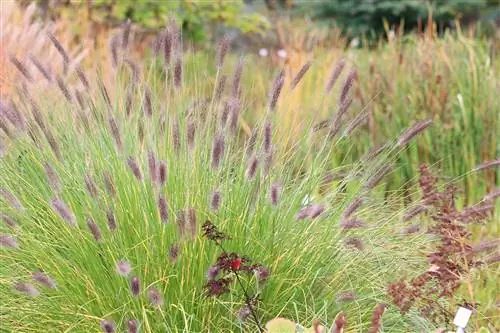
Prevent self-seeding
Some types of grass (e.g. flat ear grass or turf grass) can multiply through self-sowing and thus take over the garden in a very short time. However, this can be avoided by specifically preventing seed formation. This is best achieved by removing the flower spikes shortly before the seeds ripen. For this reason, in this case it is advisable to cut off the inflorescences in autumn.
Dispose of clippings
The resulting clippings can be disposed of in many ways, such as in the organic waste bin or at a special disposal point. However, it is even better to dispose of the clippings in the compost and thereby create an organic fertilizer for all kinds of plants in the home garden.
- Put cuttings (if possible) in shredder
- The area of attack for microorganisms is increased
- This accelerates rotting
- Mix with fresh soil and moist composting material
- This creates valuable humus
Fertilizing after cutting
After cutting, it is recommended to lightly fertilize ornamental grasses with an organic fertilizer (e.g.: compost or rock dust). On the one hand, the additional nutrients give them more vitality and on the other hand, soil fatigue is eliminated - factors that promote their growth and thus lush shoots.
Propagate and rejuvenate after cutting
Ornamental grasses can easily be propagated by division, although the best time to do this is after cutting. All you need is a spade or a digging fork to divide the root ball as follows:
- Dig up ornamental grasses
- Uncover the root ball with a spade or digging fork
- Separating root balls with a courageous sod-breaking ceremony
- Then replant straight away
- Use as close to the ground as possible
Note:
Division is ideal for rejuvenating aging and bare ornamental grasses!

